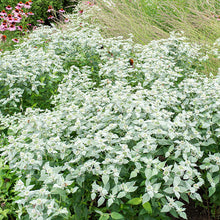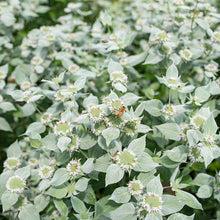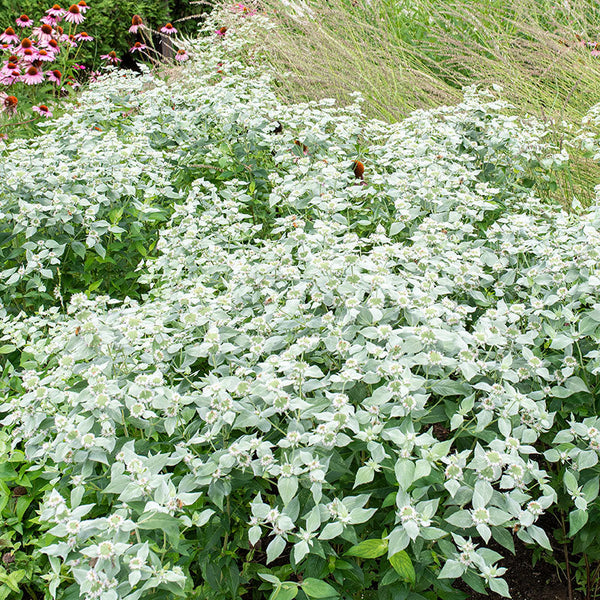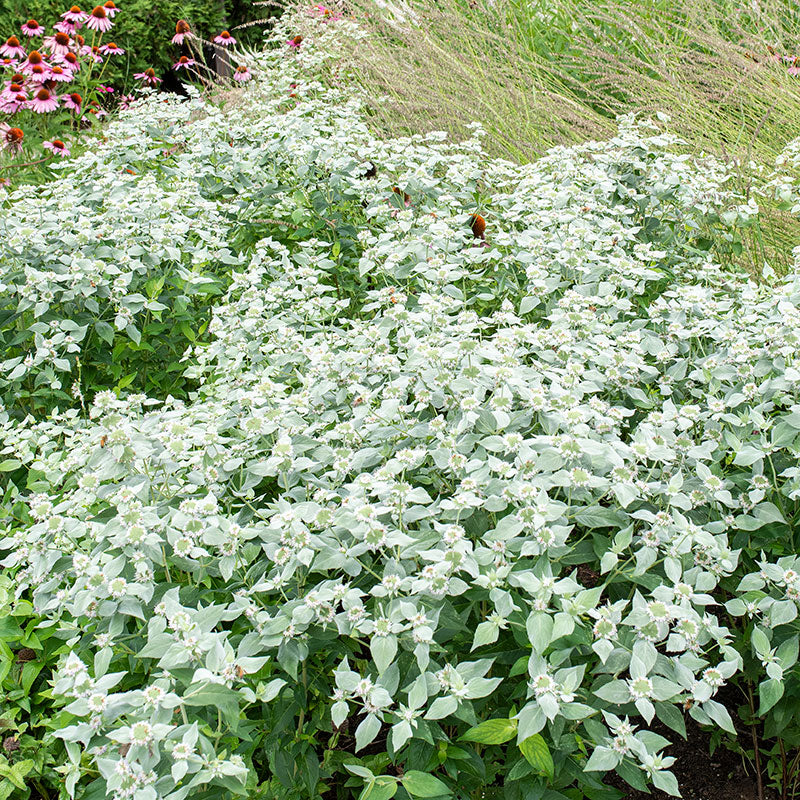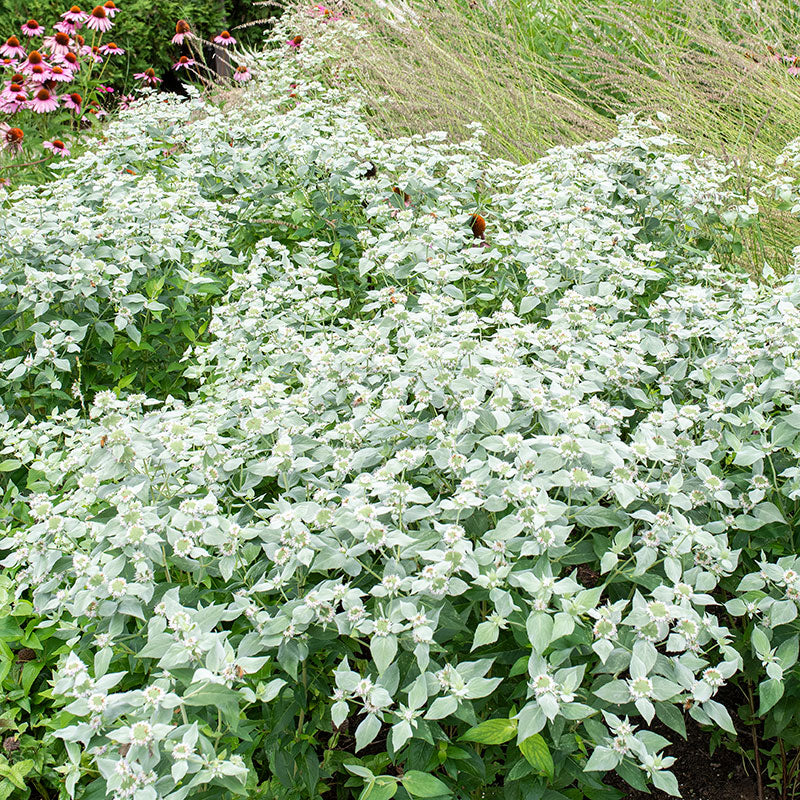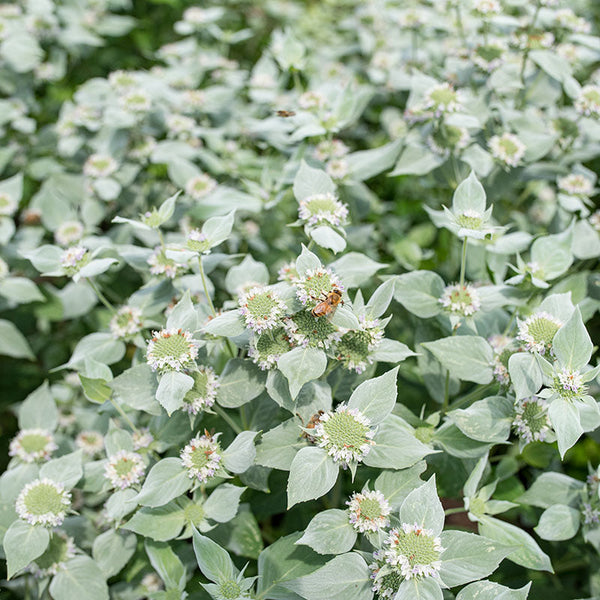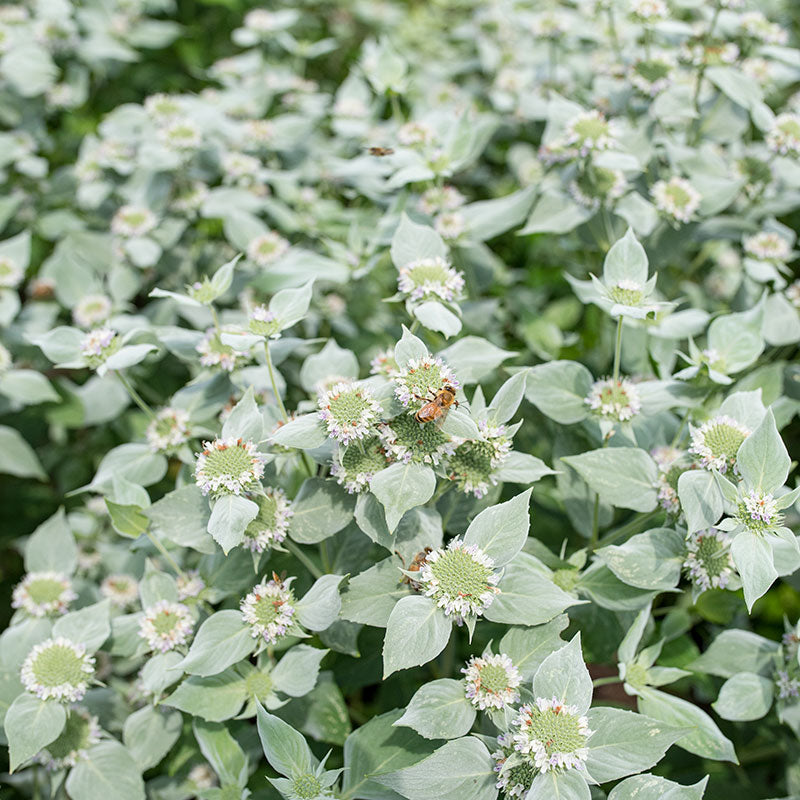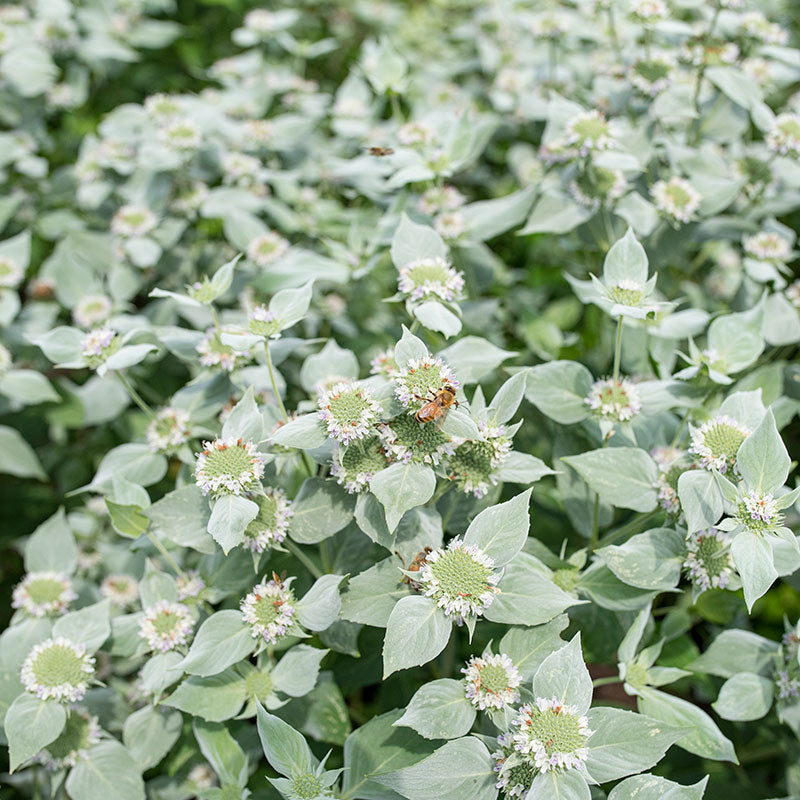Seed Packet
Mountain Mint
Pycnanthemum muticum
A cloud of dense green leaves dusted with powdered sugar, or so it seems, for this spearmint-scented mint family member develops a multitude of silvery-white bracts surrounding tiny clusters of pale flowers in summer. Easily grown in rich, regular to moist, well-drained soils, it spreads to make good clumps but is not invasive—a top-ten pollinator plant.
SKU #S1833
Currently Unavailable
Notify Me When Available






























